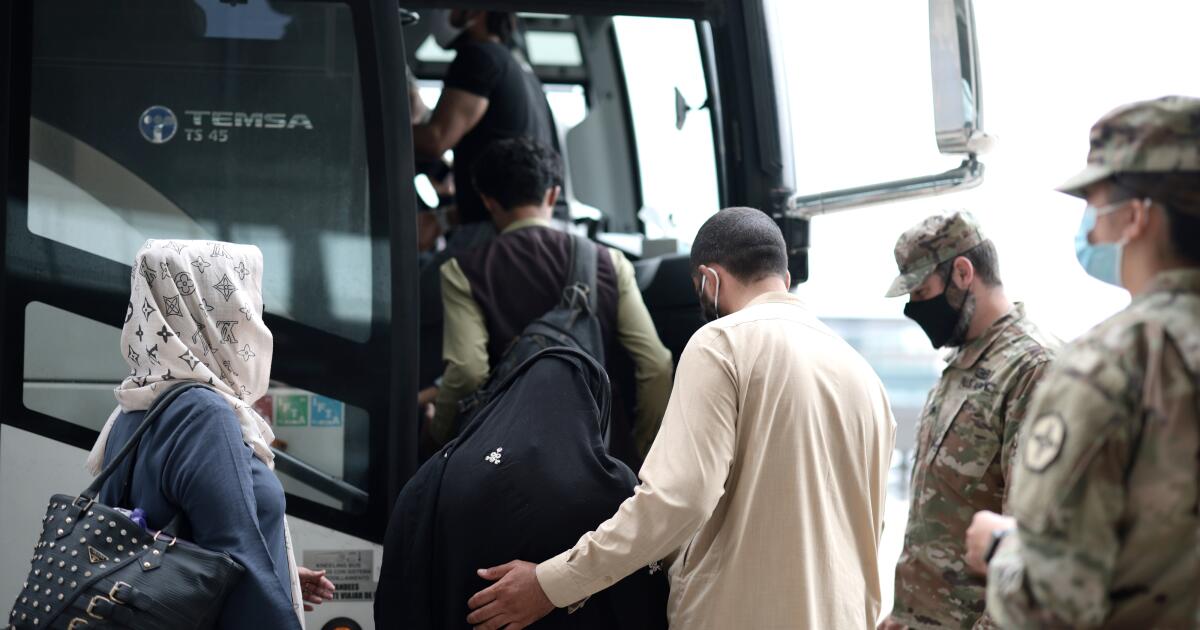U.S. tells Afghan migrants to report on Christmas, New Year’s day
U.S. Immigration and Customs Enforcement summoned Afghans residing in the U.S. to present their documents during the holiday season, marking the latest effort by the Trump administration to crack down on migrants from the Asian nation.
ICE is seeking appointments for a “scheduled report check-in,” with one requesting such a meeting on Christmas Day and another asking for one on New Year’s Day, according to copies of letters sent to different people seen by Bloomberg News. Other notices were for check-ins around the holidays on Dec. 27 and Dec. 30.
The immigration agency has arrested migrants who appear at its offices in response to such formal requests, including those attending interviews for their green cards. Recipients of the letters had previously gained legal protection and were deemed “Afghan allies” as part of a program started by former President Joe Biden in August 2021 to protect those who fled to the U.S. after the American military’s withdrawal from Afghanistan and the Taliban’s subsequent takeover of the war-torn country.
“ICE is using federal and religious holidays to detain Afghans when access to legal counsel, courts, and advocates is at its lowest,” Shawn VanDiver, founder of the nonprofit group AfghanEvac that supports Afghans who assisted the U.S. war effort, said in a statement criticizing the call-ins and their timing. “This is not routine administrative scheduling.”
A Department of Homeland Security spokesperson, however, called the check-ins “routine” and “long-standing” without elaborating on how many letters were sent out. The spokesperson added that ICE continues its standard operations during the holidays.
Christmas and New Year’s Day are federal holidays when most government offices are closed.
The call-ins follow substantial changes to the U.S. immigration policy under President Donald Trump targeting Afghans in the wake of the November shooting of two National Guard troops by Rahmanullah Lakanwal, an Afghan national who worked with U.S. forces and the CIA in Afghanistan before arriving in the US in 2021. Homeland Security Secretary Kristi Noem said that Lakanwal, who has been charged with murder, came to the U.S. through the Biden program known as Operation Allies Welcome.
Since the November shooting, the Trump administration has announced it will re-review the cases of all refugees resettled under the Biden administration and freeze their green card applications, and will consider among “significant negative factors” a country’s inclusion on the president’s vast travel ban.
In another blow to Afghans, the administration’s refugee cap for fiscal year 2026 was vastly lowered to 7,500 from 125,000. The presidential determination indicated it will favor White South Afrikaners and did not mention Afghans.
The administration also removed an exemption for Afghan nationals with Special Immigration Visas — which offers those who provided services to the US government or military in Afghanistan — when it expanded its entry ban list to nationals of more than 30 countries from 19 previously. Afghan nationals were already on the entry ban list prior to the expansion.
The State Department earlier this year shuttered the office that helped resettle Afghan refugees who assisted the American war effort. An effort on Capitol Hill to compel the administration to restart the operations failed to make it into the defense policy bill that Trump signed this month.
With assistance from Alicia A. Caldwell. Lowenkron writes for Bloomberg.
